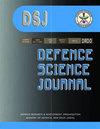海军用褶皱离散孔无纺布滤芯的分析
IF 0.8
4区 工程技术
Q3 MULTIDISCIPLINARY SCIENCES
引用次数: 0
摘要
在海军应用中,一般采用褶皱离散孔无纺布层滤芯。用于此类应用的过滤器要求最大的过滤速率、更低的压降、更高的渗透率、有效的孔径分布和良好的过滤效率。在其他最常见的金属丝网过滤元件类型中,几何参数定义良好,可以很容易地建模。在无纺布层滤芯的情况下,孔隙以随机分布的方式排列,建模变得困难。在目前的研究中,一种新的方法被设想为建模相同。流体通过滤芯是由渗滤现象形成的。采用达西定律方法,综合考虑轴向、径向和周向流动阻力,解析得到了不同流量下滤芯上的压降。通过CFD分析得到的理论预测结果与实际模型行为具有较好的相关性,表明了该方法的有效性,可在类似应用中推广应用。本文章由计算机程序翻译,如有差异,请以英文原文为准。
Analysis of Pleated Discrete Pore Non Woven Layer Type Filter Element for Naval Applications
In naval applications generally, the pleated discrete pore non-woven layer filter element is used. Filters used for such applications require maximized filtration rate, lower pressure drop, higher permeability, effective pore size distribution and good filtration efficiency. In other most common wire mesh filter element types, the geometric parameters are well defined and can easily be modelled. In the case of non-woven layer filter elements the pores are arranged in a randomly distributed manner and the modelling becomes difficult. In this present study a new approach was contemplated for modelling the same. The fluid flow through the filter element is by percolation phenomenon. Using Darcy’s law approach, the pressure drop across the filter element for different flow rates, were found analytically by considering the flow resistance in axial, radial and circumferential directions. The theoretical prediction made by CFD analysis is correlated with actual model behaviour and a good degree of correlation is obtained which shows the efficacy of this method for wider use in similar application.
求助全文
通过发布文献求助,成功后即可免费获取论文全文。
去求助
来源期刊

Defence Science Journal
综合性期刊-综合性期刊
CiteScore
1.80
自引率
11.10%
发文量
69
审稿时长
7.5 months
期刊介绍:
Defence Science Journal is a peer-reviewed, multidisciplinary research journal in the area of defence science and technology. Journal feature recent progresses made in the field of defence/military support system and new findings/breakthroughs, etc. Major subject fields covered include: aeronautics, armaments, combat vehicles and engineering, biomedical sciences, computer sciences, electronics, material sciences, missiles, naval systems, etc.
 求助内容:
求助内容: 应助结果提醒方式:
应助结果提醒方式:


